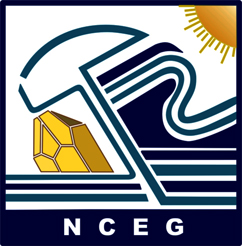Envg. 706 Monitoring of Gas Fluxes Credit Hours (3)
Specific Objective of the Course:
The course is designed to enable the students to understand the mechanism of earth system and monitor the techniques involve to determine the gas fluxes.
Course Outline:
Earth system: atmosphere, hydrosphere, lithosphere, biosphere; biogeochemical elements (macro and microelements), hydrological and biogeochemical cycles: reservoirs (atmosphere, ocean, land surface and subsurface, ice or glaciers), fluxes (precipitation, evaporation, transpiration, surface runoff, subsurface runoff, infiltration, spring) and residence time (atmosphere, ocean, streams and rivers, groundwater), sources (natural or anthropogenic), techniques and instruments to measure gas fluxes: soil moisture with tensiometer, soil temperature with sensor, rain gauge to measure precipitation, carbon fluxes (gas chamber system), CO2 and CH4 determined with GC-TCD detector, N2O with ECD detector, functional groups identification with FTIR, gas fluxes between leaves and atmosphere with gas chamber system, dendrochronology (for trees for trace elements with AAS).
Recommended Books:
- H. Pertti and L. Kulmala, “Boreal forest and climate change”, Springer-Verlag, USA, 2008.
- R. Donald, “Assessing climate change: temperatures, solar radiation, and balance”, Springer-Verlag, USA, 2008.
- A.S.T.M standards by American society for testing and materials. ASTM, USA, 2007.
- Pamela, and R. C. Harriss, “Biogenic trace gases: measuring emissions from soil and water, method in ecology”, Springer-Verlag, USA, 1995.

